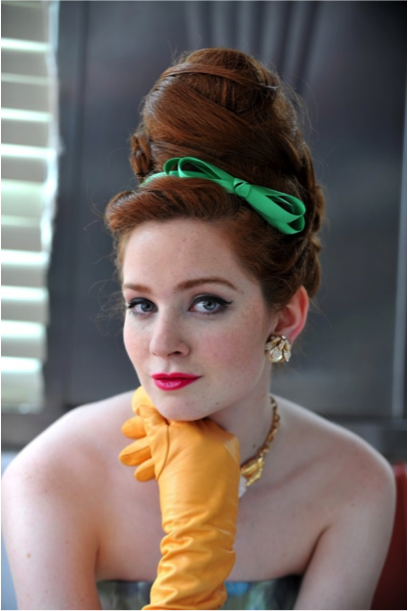The Summer Youth Conservatory is hard at work on this summer’s production of Hairspray. This week we’re featuring “Timeless to Me: A Charm City Chronicle,” a three-part series by PlayMakers dramaturg Gregory Kable.
Waters was decidedly older, but as I grew into exploring the arts scene in my own right, I recognized he made movies unlike anyone else. That first big trinity of Pink Flamingos, Female Trouble, and Desperate Living were some of the most startling and transgressive films I’d ever seen. That such stories and characters were being situated only miles from my family’s home made them that much more affecting. How could a place like Baltimore contain such outlandish figures and clandestine events? Where was access to these hidden dimensions? Waters himself often underplayed his influence, embracing such monikers as the ‘Duke of Dirt’, but for all of the improvisational and amateurish elements of those movies he was steadily something more: a restless experimenter who rightly sits on the shelves of our own Davis Library dead between Andy Warhol and Orson Welles, an authentic avant-garde auteur, the local celebrity who broke bad to make good, the Francois Truffaut of trash. The Waters persona was that of a hipster Boris Karloff, right down to the manicured moustache and natty wardrobe, and the city took its homegrown Prince of Darkness to heart. In the seventies, it seemed that Waters had established the career that would contain as well as define him.
Within four short years came that most unexpected development. His subsequent films of the eighties, Polyester and Hairspray, catapulted Waters into the Hollywood mainstream. For those with a history, it was positively surreal to see Waters enjoying the red carpet treatment at Baltimore’s last surviving art deco movie palace, The Senator Theatre, an epicenter of glossy studio releases. There was much speculation on whether Waters had sold out or if his sudden rise was an omen of immediate cultural Armageddon. Both controversies, unlike the films that sparked them, quickly became moot points. The world wagged on so the doomsday scenario was quietly withdrawn, and soon thereafter, despite his higher visibility, Waters gave us Kathleen Turner as a homicidal housewife in the bloody farce Serial Mom, and to all appearances the mind behind Multiple Maniacs had (wisely? unwisely?) returned to form.
 |
| Source: www.darkroom.baltimoresun.com |
I’ve always admired Waters for his determination and spunk, his maverick creativity, and his ability to create a definitive style as much as a Vincente Minnelli or Kubrick had, or contemporaries like DePalma and Scorsese were doing. If Polyester might be deemed a fluke, Hairspray proved that the breakthrough was no happy accident. I’ve also long shared Waters’ love of what many deride as junk culture, and that too may be a Baltimore thing. If we diverge in specifics, I understand and champion Waters’ attraction to the rough, unruly, populist arts with their nourishing roots in the working class. No matter how fleeting, the festive, outrageous, and even downright bizarre can reveal their own beauty and hold the virtue of being unmistakably alive. In that sense, Hairspray extended what Waters had been gravitating toward all along but with a skill and a savvy that surprised him most of all. That the movie gained momentum, achieving full-blown classic status on the home video market stands as further proof of its mythic foundations. At last, that delicate place between personal conviction and public consensus had been found. Either that or, as Waters suggests, maybe times were so terrible and felt so intractable that all you could do was laugh. (“All my career has been irony,” Waters maintains in a Hairspray interview, “it’s what delights me the most in this world.”)
 |
| Source: www.darkroom.baltimoresun.com |
 |
| Source: www.darkroom.baltimoresun.com |
Hairspray, presented by the PlayMakers Summer Youth Conservatory, runs July 16 – 21, 2014. Get tickets and info at www.playmakersrep.org/hairspray.